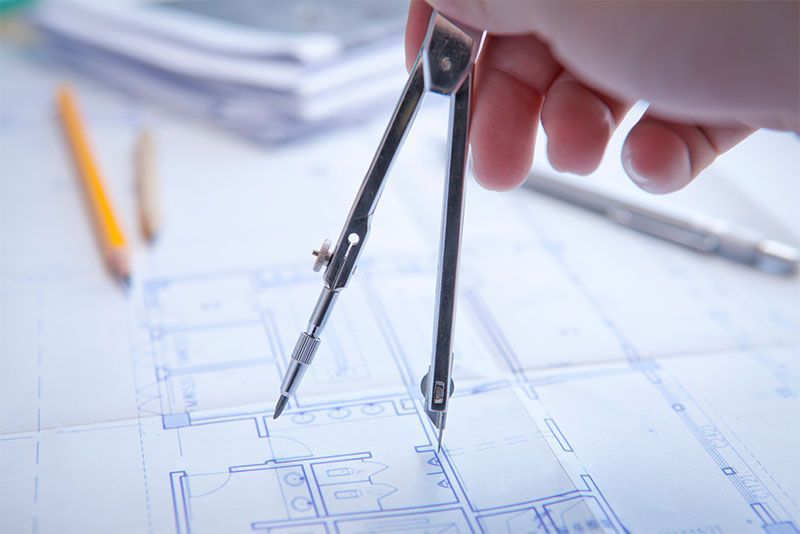Converting a PDF Drawing Into CAD
Converting A PDF Drawing Into Cad

Determine if you have a Raster or a Vector PDF
If a print was scanned to make your PDF, the content is a Raster image - just lines of dots.
You can tell that you have a Raster PDF by clicking on the page in the PDF viewer. If it turns blue, it is a Raster image.
You can also tell this by zooming in on a detail. If angled lines appear jaggy, like this, you have a Raster PDF.
Vector PDFs drawings are made directly from CAD applications. In addition to being crisp, they may also contain layers which can be toggled on or off inside Acrobat.

Converting a Raster PDF to CAD
If you need your entire drawing in CAD,the most efficient option is to use our re-drafting service. It's fast, cost-effective and you will have a perfect,properly layered, CAD file that contains all the information from your PDF.
If you only need to edit a small detail in a drawing that does not require many or frequent revisions, you could consider inserting the raster PDF into your CAD application as an externally referenced file (an 'x ref') and then making the minor edit on top of the raster. This creates a hybrid drawing which displays the raster original for all the areas that have not changed.Raster-to-vector conversion software is available and could be considered if your drawing contains very simple images such as cutting profiles that are single continuous lines or map contours that are not overlaid by other features.
You can purchase raster-to-vector software to trace lines and convert them to CAD vectors.
However, the more detailed and layered the drawing is, the less satisfactory the results are.
In order to use these vectors, a lot of manual clean up would be required - so much that it would be quicker to manually draft the detail in CAD from scratch.
A Vector PDF is somewhat like a CAD file because both contain vector entities. The two major differences are:
CAD formats like DWG are designed for the precision required in engineering instead of the much less precise requirements of PDFs which were originally intended for printing purposes. CAD formats have many more types of entity to support the requirements of drafting whereas PDFs use a limited set of entities. CAD files have much richer data than PDF files.
Vector PDFs are created by exporting PDFs from CAD applications. The accuracy of the original dimensions in the CAD file is reduced to the more limited precision of a PDF. With more than 60 entity types in a typical CAD application, these are reduced to just the six types available in PDF. If your CAD drawing will not require high precision and/or proper CAD entities,you can use automatic conversion software such PDF2CAD, Print2CAD or the PDF IMPORT function in AutoCAD2017 to 'reverse' the vector information in the PDF back into CAD. These do a very good looking job within the limitations set out above. If you need the best dimensioning possible and proper CAD entities and layers, redrafting is, again, the only option. Our drafters read dimensions and set them exactly in CAD.
Our drafters create exactly the CAD entities that you would expect from experienced, professional, drafters.
A scan DOES NOT work in CAD?
When a drawing is scanned, it does not become CAD. It is a ‘raster’ image – just a series of dots of different colors and shades. It cannot be edited in CAD because CAD programs use vectors, not dots, for their lines. If you open a vector image and zoom in on a detail, the lines appear clearly, no matter how far in you zoom. If you open a raster image and zoom in on a detail, the lines appear jaggy. The raster image appears jaggy because the lines have been created using individual 'dots'.
When the dots are seen together on a screen, our brains 'connect the dots' and we see lines. Raster images are created when a drawing is scanned into a computer. Many PDFs are raster images because they were created by scanning in the first place. A photo is another example of a raster image.
A raster is usually fine for viewing images, provided the original raster image is of a sufficiently high resolution. By this, we mean that there are plenty of dots per inch (dpi). Our brains will do the connecting work.
CAD programs work completely differently. They describe lines mathematically. A CAD program defines a straight line as "start at coordinate x , y and go to coordinate x , y ". Curved lines and other shapes are defined using more complex mathematical descriptions.

- A reasonably accurate description of the content of a CAD file is "rich data". When the time comes to edit a scanned plan or engineering drawing, there are four possible approaches:
- You could edit the file in a raster editing software such as Paint or Adobe Photoshop. This is possible if you are skilled in using these applications. The result is still a raster image. Controlling dimensions and overlaying details using raster editing is much harder to do than it is in CAD.Use raster to vector conversion software which tries to semi-automatically trace the raster lines into vectors. This works for simple profiles and continuous uninterrupted lines such as logo outlines. It does not work well for dimensioned or complex drawings because the algorithms are not anything like as good as the human brain at interpreting the raster images.
- Hybrid CAD editing, is where you insert the raster image that was scanned into a CAD file as a background. This is still a raster and it cannot be edited by the CAD application. But you can then draw over it using CAD vectors.
The result is a hybrid CAD drawing which stores both the original raster scan and the CAD lines drawn on top of it. - Manual redrawing by a proper CAD operator is the best approach. This is what we do. We take your drawing and convert it to a CAD file vector format using proper CAD entities and with all lines and text layered.Everything in it can then be edited using a CAD application, because it has been drawn in CAD in the first place. This is the best and most cost-effective approach when your raster drawing must be used in CAD.
The CAD and BIM we produce is properly drafted by trained CAD operators with years of experience. We use normal architectural and engineering drafting conventions and layer accordingly.
The files you receive from us will be immediately editable in your own CAD or BIM application with no additional reworks.
- Paper to AutoCAD
- Raster to Vector
- PDF to AutoCAD
- TIFF to AutoCAD
- Photographs to CAD Conversion
- Multilayered
- Hand sketches to AutoCAD
- AutoCAD










